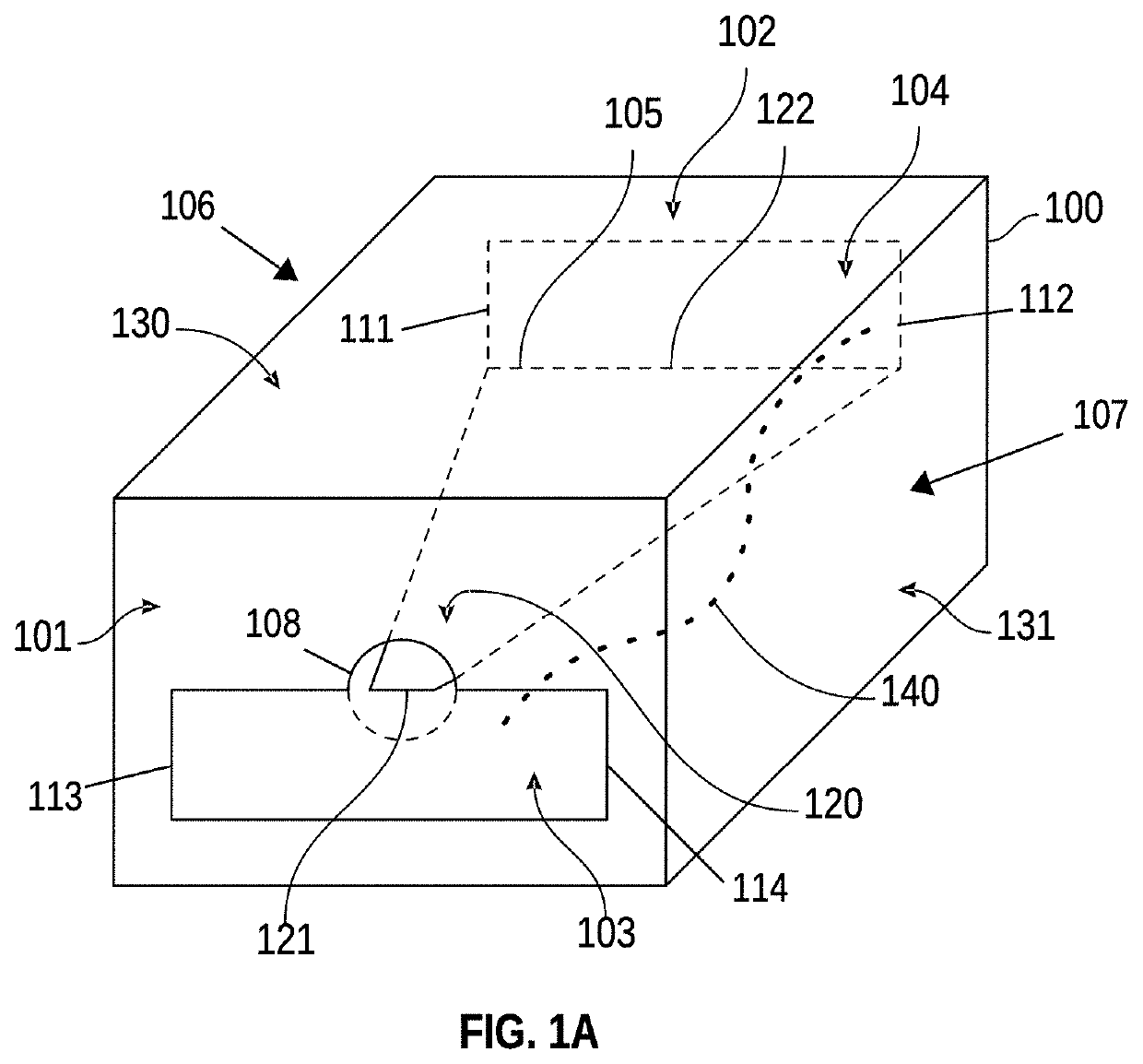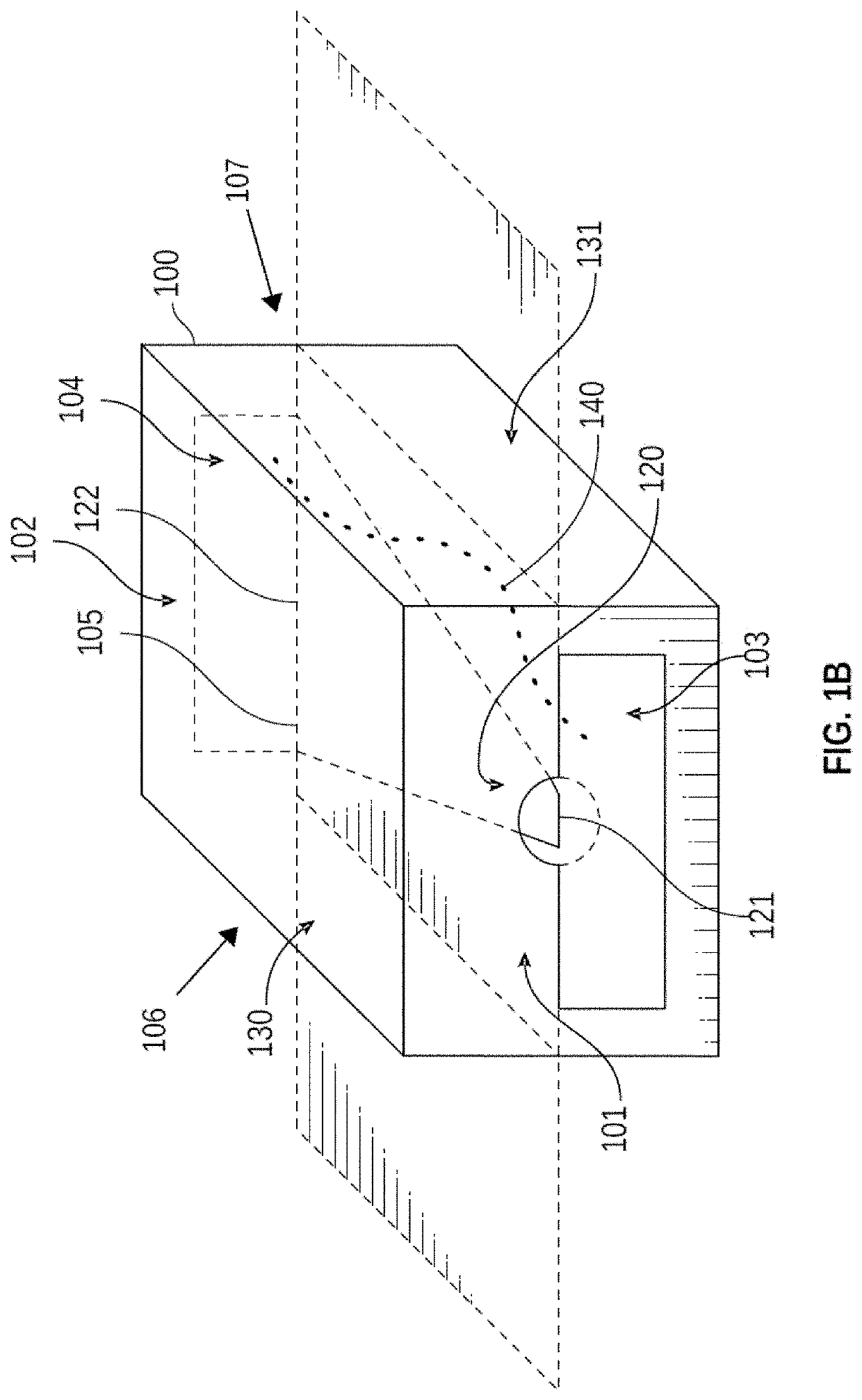Waveguide transition between front and rear windows connected by a tapered plate to form upper and lower chambers that define an energy path through the transition
a transition and waveguide technology, applied in the direction of waveguide type devices, basic electric elements, coupling devices, etc., can solve the problems of inconvenient inability to realize high-integrated microwave circuits, and inability to reduce the cost of insertion loss of electromagnetic waves, so as to facilitate the realization of high-integrated microwave circuits and minimize the loss of electromagnetic waves. , the effect of easy separability
- Summary
- Abstract
- Description
- Claims
- Application Information
AI Technical Summary
Benefits of technology
Problems solved by technology
Method used
Image
Examples
example
[0052]The following is a non-limiting example of the present invention. It is to be understood that the example is not intended to limit the present invention in any way. Equivalents or substitutes are within the scope of the present invention.
[0053]In one example embodiment, a 5G band pass filter implementation comprises two waveguide transition instances as described in the present invention. The example embodiment: is fabricated in a two conductor-layer planar printed circuit technology, wherein the structural dielectric material supporting the printed-circuit board lamina has an effective relative dielectric constant of about 3.0; operates at a center frequency of 28 gigahertz; and is available as a component for solder attachment to a host printed circuit board whose complementary footprint is specified by the product data sheet of this example embodiment. Its container (100): has the form of a rectangular prism; comprises a tapered plate (120) that tapers linearly from rear ed...
PUM
 Login to View More
Login to View More Abstract
Description
Claims
Application Information
 Login to View More
Login to View More - R&D
- Intellectual Property
- Life Sciences
- Materials
- Tech Scout
- Unparalleled Data Quality
- Higher Quality Content
- 60% Fewer Hallucinations
Browse by: Latest US Patents, China's latest patents, Technical Efficacy Thesaurus, Application Domain, Technology Topic, Popular Technical Reports.
© 2025 PatSnap. All rights reserved.Legal|Privacy policy|Modern Slavery Act Transparency Statement|Sitemap|About US| Contact US: help@patsnap.com



